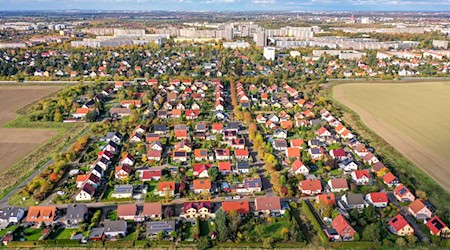Saxony, which has always been good for political surprises since reunification, is once again facing a groundbreaking state election. On September 1, 2024, citizens will decide the future of their federal state - and the cards will be reshuffled this time. The election on September 1, 2024 is particularly volatile, as the political landscape is more fragmented than ever before. Traditionally a stronghold of the CDU, the established parties are now facing the rise of new political forces.
Election results and seat distribution in the polls
According to the latest poll by Dimap Infratest from June 20, 2024, the political map in Saxony looks like this: CDU at 29%, SPD and Greens at 7% each, FDP and Freie Wähler (FW) at less than 2%, Linke at 3%, AfD at 30%, Bündnis Sahra Wagenknecht (BSW) at 15% and other parties at 9%. With a 5% hurdle and 120 seats to be allocated, it is clear that forming a coalition will be a balancing act of the first order.
The deviations from the election result are, according to dawum.de by Infratest dimap of between 0.5% and 5.6%.
Possible coalitions in Saxony
The current scenario sees the AfD as the strongest force in the state parliament with 36 seats. The CDU has 35 seats, BSW 18 and the Greens and SPD 8 each. With this distribution of seats, it quickly becomes clear that traditional coalitions are hardly feasible. The BSW does not want to work with either the AfD or the Greens. The CDU in Saxony has already signaled its aversion towards the Greens. This means that a black-green coalition is out of the question, and a black-red coalition of CDU and SPD does not have a majority either. The current alliance of CDU, SPD and Greens would also just miss out on 61 seats and lose its majority.
Scenarios with the Left Party in the state parliament
If the Left Party were to overcome the 5% hurdle and enter the state parliament, the picture would change abruptly. The Left Party would get at least 6 seats, which would redistribute the total number of seats. A possible coalition of CDU, SPD and Greens could then, with the support of the Left, achieve a narrow majority. However, the ideological divides are deep and the negotiations would probably be protracted and controversial.
Risks for democracy
The AfD's participation in a governing coalition poses considerable risks for democracy. With its often controversial political rhetoric, AfD participation in government could put basic democratic values in Saxony to the test. Added to this is the BSW, which also strictly rejects cooperation with the Greens. This polarization could lead to a further radicalization of the political landscape and deepen the social divide.
Majorities without BSW?
A majority without the BSW is theoretically possible, but only if the Left enters the state parliament. A coalition of CDU, SPD and Greens (with the support of the Left) could form a more or less stable majority. However, this would require a considerable degree of willingness to compromise from all parties involved - something that hardly seems realistic in the current political atmosphere.
If the Linke does not make it
If the Linke and no other party were to overcome the 5% hurdle, the established parties would have no choice but to form a coalition with either the AfD or the BSW. Either way, a populist party would then be involved in government. This would not only radically change the political landscape in Saxony, but would also have far-reaching implications for the whole of Germany.
Asterisks for the 5% hurdle - influence of direct mandates
If a party wins at least two direct mandates in Saxony, the basic mandate clause of the Saxon Election Act (Section 6 SächsWahlG) allows a party to enter the state parliament without exceeding the 5% threshold. This regulation ensures that parties with strong regional support are represented in the state parliament despite a lower overall share of the vote. This could be particularly important for smaller parties that have a strong base in certain constituencies but less support nationwide. Then it will be really colorful in the state parliament in Saxony.
Historical context
Historically, Saxony has always been a CDU-dominated state, often in coalition with the FDP or SPD. However, the political stability of the 1990s seems a long way off and the challenges facing Saxony today are far more complex.
Conclusion
The state election in Saxony in 2024 promises to be a political minefield. With the AfD possibly as the strongest force, a fragmented opposition and ideological rifts between the parties, a stable government is difficult to imagine. September 1, 2024 will show where the cross will be placed in Saxony and whether Saxony will be able to form a viable coalition or whether it will enter a phase of political instability. One thing is certain: the political landscape in Saxony will not be the same after this election.
An optimistic appeal
Dear citizens of Saxony, your vote is now more important than ever! Use your vote to strengthen democratic forces and steer the future of the federal state in a safe direction. Your vote can help form stable and constructive coalitions that boost our economy, promote social cohesion and ensure sustainable development.
Vote and support the democratic parties that stand for a strong, future-oriented Saxony. Every vote counts - for democracy, for the citizens and for the future of Saxony. Let us work together to ensure that political decisions are in the hands of responsible and democratically-minded forces. Your vote will decide the Saxony of tomorrow - help shape it!










